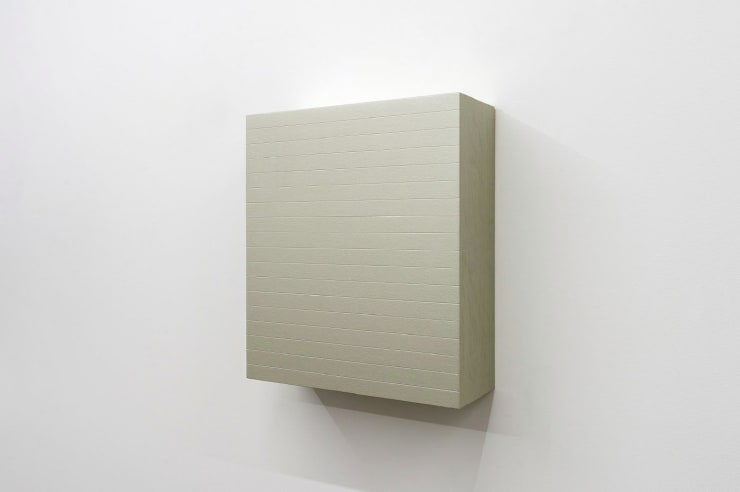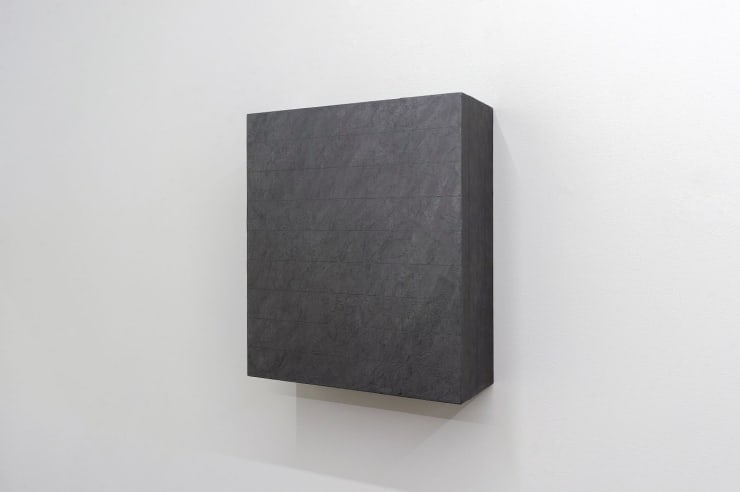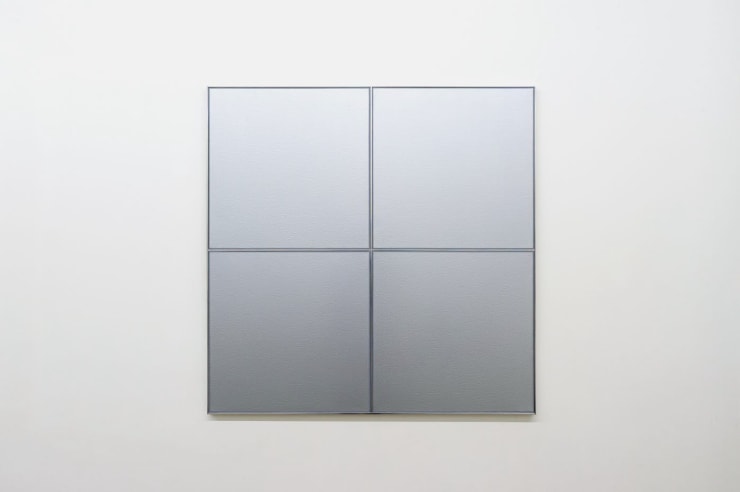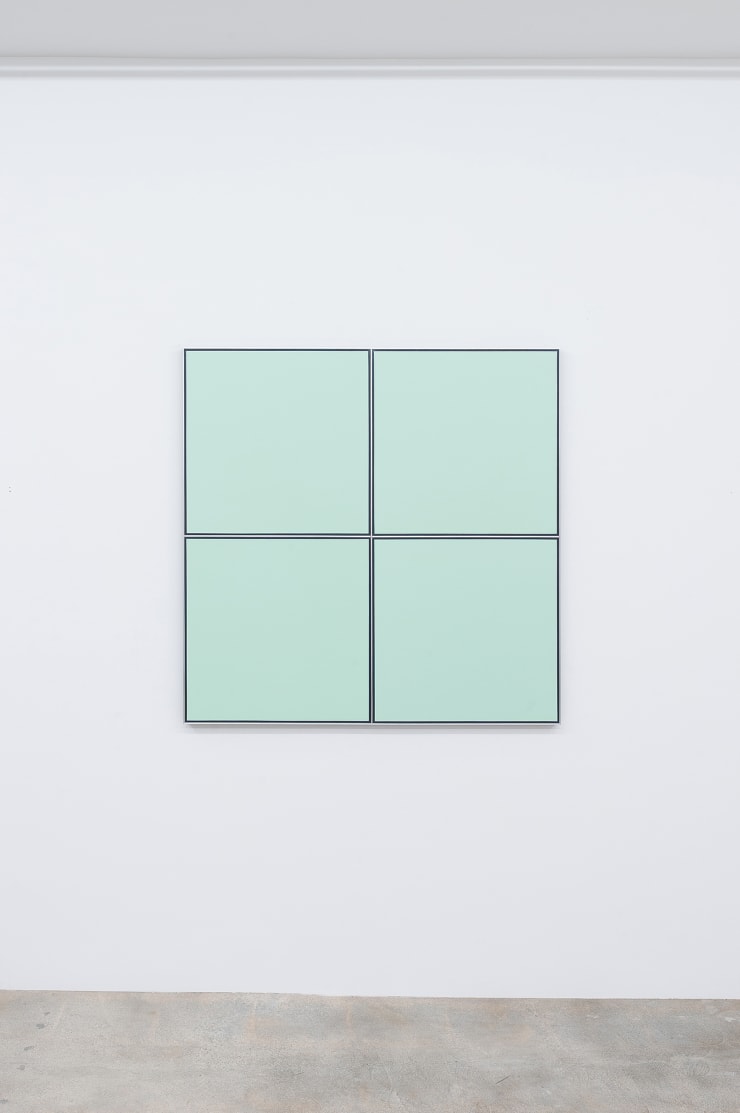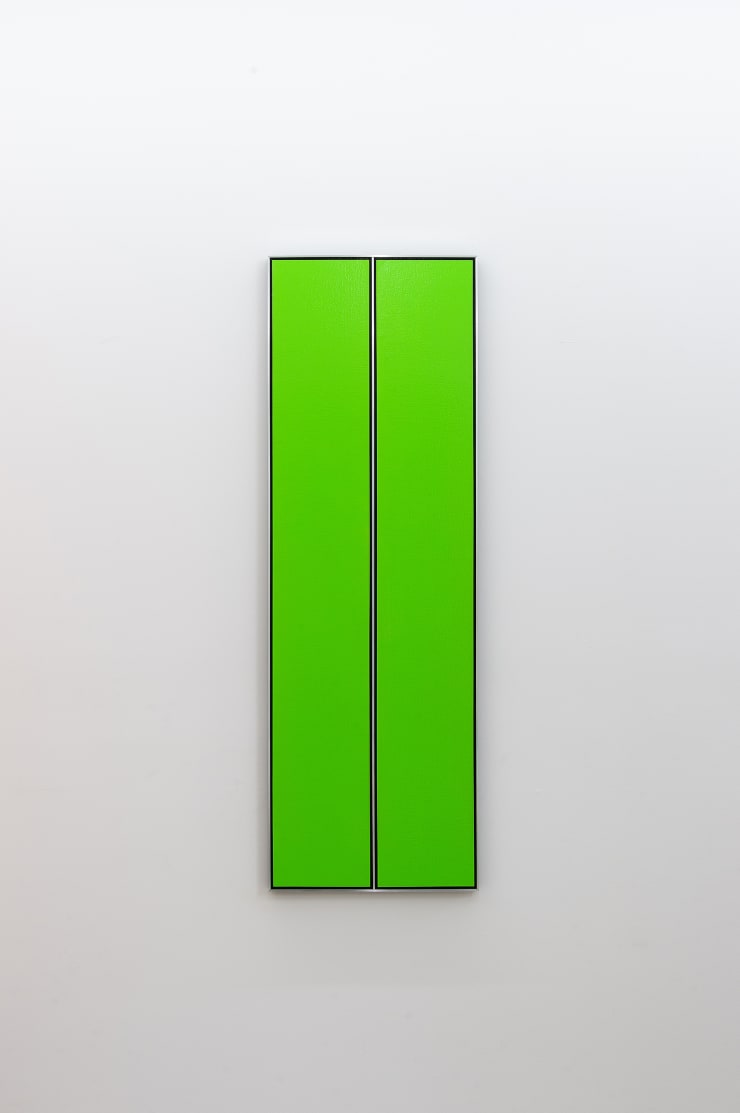Tadaaki Kuwayama
Tadaaki Kuwayama (March 4, 1932 – August 18, 2023) was a Japanese painter and a pioneering figure in the American Minimalist movement of the 1960s and 1970s. Born in Nagoya, Japan, Kuwayama graduated from the Tokyo National University of Fine Arts and Music in 1956, where he studied nihonga, a traditional Japanese painting style. Disenchanted with the rigid conventions of nihonga and the contemporary Japanese art scene, he relocated to New York City in 1958 with his wife, fellow artist Rakuko Naito. This move marked a transformative phase in his career, as he immersed himself in the vibrant American art world and developed a distinctive minimalist style.
Kuwayama’s early works in New York incorporated Japanese mineral pigments and paper, reflecting his nihonga training. However, by the time of his first solo exhibition at the Green Gallery in 1961, he had shifted to monochromatic acrylic paintings arranged in geometric forms, eschewing gestural abstraction for a reductive, “pure art” approach. His work, characterized by vivid color fields, metallic strips, and industrial materials like titanium and anodized aluminum, challenged traditional notions of painting and sculpture. Kuwayama’s art aimed to eliminate subjective expression, focusing instead on color, form, and spatial interaction to create immersive viewer experiences.
Throughout the 1960s, Kuwayama’s monochromatic compositions, often bisected by aluminum strips, earned him recognition alongside Minimalist contemporaries like Donald Judd and Dan Flavin. In the 1970s, he explored metallic paints and large-scale rectangular sections, transitioning to more subdued tones. The 1980s saw experimentation with oil paint and three-dimensional textures, while the 1990s marked a focus on spatial installations, using reflective materials to engage with the environment. His works have been exhibited globally, including at the Solomon R. Guggenheim Museum, the National Gallery Singapore, and the Museum of Modern Art in Hayama, Japan.
Kuwayama’s commitment to “radical neutrality,” as described by art historian Michio Hayashi, underscored his pursuit of art devoid of personal narrative or cultural context. His contributions to Minimalism and his innovative use of materials have left a lasting impact on contemporary art, bridging Eastern and Western artistic sensibilities. Kuwayama lived and worked in New York until his passing in 2023, leaving behind a legacy of groundbreaking minimalist works held in prestigious collections worldwide.
-
 Tadaaki KuwayamaUntitled, 1999Anodized aluminum. 90 units.86-1/2 x 7 x 2-1/2 inches, each (219.7 x 17.8 x 6.4 cm) / 108 linear feet
Tadaaki KuwayamaUntitled, 1999Anodized aluminum. 90 units.86-1/2 x 7 x 2-1/2 inches, each (219.7 x 17.8 x 6.4 cm) / 108 linear feet -
 Tadaaki KuwayamaTK4718-5-3/5-92, 1992Oil on paper on board.18 x 15-3/4 x 5-3/4 inches,
Tadaaki KuwayamaTK4718-5-3/5-92, 1992Oil on paper on board.18 x 15-3/4 x 5-3/4 inches,
45.7 x 40 x 14.6 cm -
 Tadaaki KuwayamaTK4918-5-5/8-90, 1990Black (D gray) oil on paper on board.18 x 15-3/4 x 5-3/4 inches, 45.7 x 40 x 14.6 cm
Tadaaki KuwayamaTK4918-5-5/8-90, 1990Black (D gray) oil on paper on board.18 x 15-3/4 x 5-3/4 inches, 45.7 x 40 x 14.6 cm -
 Tadaaki KuwayamaUntitled, 1976Acrylic on canvas, aluminum strip99 x 30 3/8 inches
Tadaaki KuwayamaUntitled, 1976Acrylic on canvas, aluminum strip99 x 30 3/8 inches
252 x 77 cm -
 Tadaaki KuwayamaTK2743-1/4-75, 1975Metallic paint on canvas, aluminum. (silver)43-1/4 x 43-1/4 inches (109.9 x 109.9 cm)
Tadaaki KuwayamaTK2743-1/4-75, 1975Metallic paint on canvas, aluminum. (silver)43-1/4 x 43-1/4 inches (109.9 x 109.9 cm) -
 Tadaaki KuwayamaTK3343-1/4-75, 1975Metallic paint on canvas, aluminum. (gold)43-1/4 x 43-1/4 inches (109.9 x 109.9 cm)
Tadaaki KuwayamaTK3343-1/4-75, 1975Metallic paint on canvas, aluminum. (gold)43-1/4 x 43-1/4 inches (109.9 x 109.9 cm) -
 Tadaaki KuwayamaUntitled, 1971Acrylic on canvas with aluminum strip.84-1/2 x 194 inches / 214.6 x 492.8 cm
Tadaaki KuwayamaUntitled, 1971Acrylic on canvas with aluminum strip.84-1/2 x 194 inches / 214.6 x 492.8 cm -
 Tadaaki KuwayamaUntitled, 1969Acrylic on canvas with aluminum strips108 x 27 1/2 in
Tadaaki KuwayamaUntitled, 1969Acrylic on canvas with aluminum strips108 x 27 1/2 in
274.3 x 69.8 cm -
 Tadaaki KuwayamaUntitled, 1969Acrylic on canvas with aluminum strip.60 x 19-3/4 inches
Tadaaki KuwayamaUntitled, 1969Acrylic on canvas with aluminum strip.60 x 19-3/4 inches
152.4 x 50.2 cm -
 Tadaaki KuwayamaUntitled, 1968Acrylic on canvas. Unique. Sage Green47-3/4 x 47-3/4 inches
Tadaaki KuwayamaUntitled, 1968Acrylic on canvas. Unique. Sage Green47-3/4 x 47-3/4 inches
121.3 x 121.3 cm -
 Tadaaki KuwayamaUntitled, 1968Acrylic on canvas. Unique. (Pink)47-3/4 x 47-3/4 inches
Tadaaki KuwayamaUntitled, 1968Acrylic on canvas. Unique. (Pink)47-3/4 x 47-3/4 inches
121.3 x 121.3 cm -
 Tadaaki KuwayamaUntitled, 1965Acrylic on canvas with aluminum strip.60 x 19-3/4 inches
Tadaaki KuwayamaUntitled, 1965Acrylic on canvas with aluminum strip.60 x 19-3/4 inches
152.4 x 50.2 cm -
 Tadaaki KuwayamaUntitled, 1965Acrylic on canvas with aluminum strip.60 x 19-3/4 inches
Tadaaki KuwayamaUntitled, 1965Acrylic on canvas with aluminum strip.60 x 19-3/4 inches
152.4 x 50.2 cm -
 Tadaaki KuwayamaUntitled, 1962Acrylic on paper on board.18-3/4 x 18-3/4 inches / 47.6 x 47.6 cm
Tadaaki KuwayamaUntitled, 1962Acrylic on paper on board.18-3/4 x 18-3/4 inches / 47.6 x 47.6 cm
-

not titled not Untitled
February 12 - March 26, 2022 Los AngelesParticipating Artists: Christian Alborz Oldham, Simone Berry, Mel Bochner, Kazuo Kadonaga, Tadaaki Kuwayama, Davora Lindner, Keita Matsunaga, Jiro Nagase, Rakuko Naito, Tomohisa Obana, Tomoko Obana, Helen Sharp, Michele Stuart, Kunié...Read more -

Tadaaki Kuwayama
January 12 - February 16, 2019 Los AngelesPress: artnet news , February 12, 2019 Art Viewer , February 14, 2019 Contemporary Art Review Los Angeles (Carla) , February 6, 2019 Nonaka-Hill is pleased to announce a solo...Read more
-
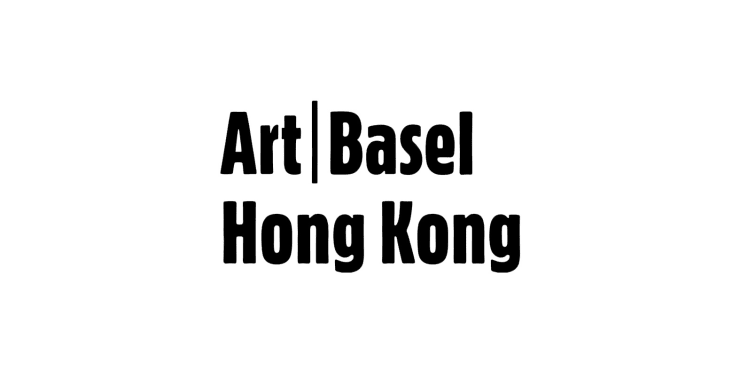
Art Basel Hong Kong
March 26 - 30, 2024Opening Hours: VIP Days (by invitation only): First Choice | Tuesday, March 26, 12 noon to 4pm First Choice and Preview | Tuesday, March 26,...Read more -

FRIEZE LOS ANGELES
February 29 - March 3, 2024Thursday Preview, February 29 (invitation only): 10am – 7pm Friday Preview, March 1 : 11am – 7pm Saturday, March 2 : 11am – 7pm Sunday,...Read more -

Felix Art Fair
February 14 - 17, 2019Read more


